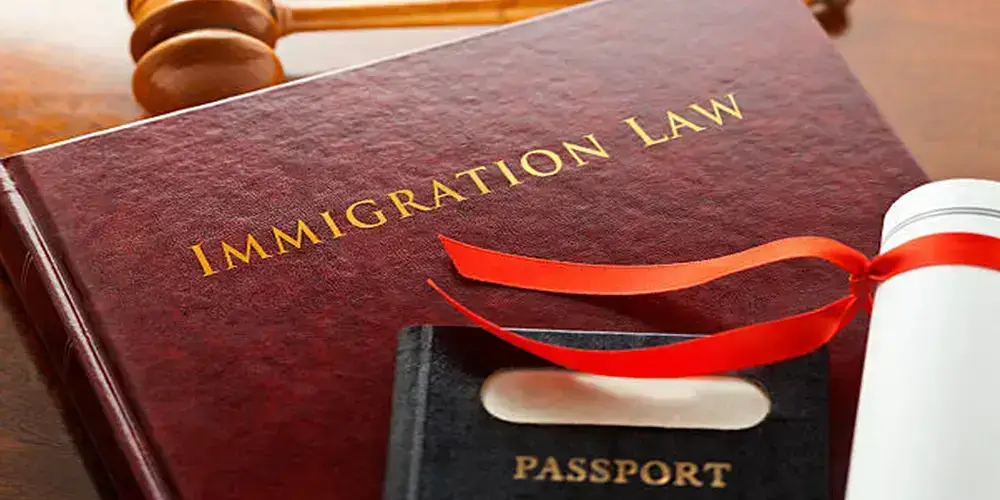

Overview of U.S. Immigration Laws and Policies
19/03/2024 Orly Smith 1327
U.S. immigration laws and policies have evolved significantly since the nation's founding, shaping the diverse society seen today. This blog will provide an overview of the history of U.S. immigration laws, the types of visas and immigration statuses, the roles of various government agencies involved in immigration, and current immigration issues and debates.
History of U.S. Immigration Laws and Policies
The history of U.S. immigration laws reflects the country’s changing attitudes towards immigrants and the various economic, social, and political factors influencing these attitudes.
Colonial and Early America: During the colonial period and early years of the republic, immigration was largely unrestricted. The need for labor and the desire to populate the expanding territories meant that newcomers were generally welcomed.
19th Century: The 19th century saw waves of immigrants, particularly from Europe. However, as numbers swelled, attitudes shifted, leading to the first significant restrictions. The Chinese Exclusion Act of 1882 was the first federal law to restrict immigration, banning Chinese laborers due to economic and racial tensions.
Early 20th Century: In the early 1900s, the U.S. began to impose quotas. The Immigration Act of 1924 established national origins quotas, severely restricting immigration from certain countries, especially those outside Western Europe. These quotas reflected the nativist sentiments and racial prejudices of the time.
Mid-20th Century: The Immigration and Nationality Act of 1965 marked a significant shift, abolishing national origins quotas and establishing a preference system based on family reunification and skilled immigrants. This law paved the way for increased immigration from Asia, Africa, and Latin America.
Recent Developments: In recent decades, immigration policies have continued to evolve, addressing issues such as illegal immigration, asylum, and refugee resettlement. Post-9/11 security concerns have also influenced immigration policy, leading to stricter screening processes.
Types of Visas and Immigration Statuses
The U.S. offers various visas and immigration statuses, each serving different purposes and having distinct requirements.
Non-Immigrant Visas: These are temporary visas for individuals who wish to visit, study, work, or reside in the U.S. for a limited period. Common non-immigrant visas include:
-
B-1/B-2 Visas: For business visitors and tourists.
-
F-1 Visa: For students attending academic institutions.
-
H-1B Visa: For skilled workers in specialty occupations.
-
L-1 Visa: For intra-company transferees.
-
J-1 Visa: For exchange visitors participating in approved programs.
Immigrant Visas: These are for individuals who intend to live permanently in the U.S. and eventually seek citizenship. Categories include:
-
Family-Sponsored Visas: For immediate relatives of U.S. citizens and lawful permanent residents.
-
Employment-Based Visas: For workers with job offers in the U.S., categorized by preference based on skills and qualifications.
-
Diversity Visa Lottery: Provides visas to individuals from countries with low rates of immigration to the U.S.
Asylum and Refugee Status: These protections are offered to individuals fleeing persecution based on race, religion, nationality, political opinion, or membership in a particular social group. Asylum seekers apply from within the U.S., while refugees are processed from outside the country.
Temporary Protected Status (TPS): This status is granted to individuals from countries experiencing ongoing armed conflict, environmental disasters, or other extraordinary conditions.
The Role of U.S. Citizenship and Immigration Services (USCIS) and Other Government Agencies
Several government agencies play vital roles in the administration and enforcement of U.S. immigration laws.
U.S. Citizenship and Immigration Services (USCIS): USCIS, a component of the Department of Homeland Security (DHS), oversees lawful immigration to the U.S. Its functions include processing applications for citizenship, green cards, work permits, and asylum, as well as managing the E-Verify system used to confirm employment eligibility.
U.S. Customs and Border Protection (CBP): Also part of DHS, CBP is responsible for securing the nation's borders and facilitating legal trade and travel. It enforces immigration laws at ports of entry and conducts inspections of travelers and cargo.
U.S. Immigration and Customs Enforcement (ICE): ICE enforces immigration laws within the U.S., focusing on identifying, apprehending, and removing individuals who are unlawfully present. It also investigates immigration-related crimes, such as human trafficking and visa fraud.
Department of State (DOS): DOS manages consulates and embassies abroad, processing visa applications and conducting interviews for immigrant and non-immigrant visas. It also oversees the Diversity Visa Lottery program.
Department of Labor (DOL): DOL ensures that the employment of foreign workers does not adversely affect U.S. workers. It certifies employment-based visa applications and enforces labor standards.
Current Immigration Issues and Debates
Immigration remains a contentious issue in the U.S., with debates often centered on the balance between security, economic needs, and humanitarian concerns.
Border Security and Illegal Immigration: The U.S. continues to grapple with securing its southern border and addressing the flow of undocumented immigrants. Debates focus on the effectiveness and ethics of measures such as border walls, detention facilities, and deportation policies.
DACA and Dreamers: The Deferred Action for Childhood Arrivals (DACA) program, which protects eligible undocumented individuals who were brought to the U.S. as children from deportation, remains a hotly debated topic. Advocates call for a path to citizenship, while opponents argue about its legality and potential to encourage illegal immigration.
Refugee and Asylum Policies: The U.S. asylum system faces challenges with backlogs and high numbers of applicants at the southern border. Policy changes and proposals aim to streamline processes, address fraud, and ensure genuine refugees receive protection, while balancing national security concerns.
Employment-Based Immigration: There is ongoing debate over the number and types of employment-based visas issued. Industries reliant on skilled foreign labor advocate for more visas, while critics raise concerns about the impact on domestic workers and wage levels.
Family Reunification: Family-sponsored immigration is a cornerstone of U.S. policy, but it faces scrutiny from those who believe it should be more merit-based. Proposed changes aim to prioritize skilled immigrants while maintaining some level of family reunification.
Public Charge Rule: This rule, which considers an immigrant's use of public benefits in determining their eligibility for green cards and visas, has sparked debate. Critics argue it unfairly targets low-income immigrants, while supporters claim it ensures self-sufficiency among new immigrants.
U.S. immigration laws and policies have a profound impact on the nation's demographics, economy, and society. Understanding the historical context, various visa types, roles of key agencies, and current issues provides valuable insight into the complexities of immigration in America. As debates continue, finding a balance that addresses security, economic, and humanitarian concerns remains a critical challenge for policymakers.
Recent Blogs
Building a Diversified Inves ...
26/01/2025 1609
Integrating AI and Machine L ...
24/01/2025 1152
Health Insurance Regulations ...
22/01/2025 2257
Recognizing Signs of Mental ...
20/01/2025 2243
Understanding Employers' Leg ...
18/01/2025 1252
Trending Blogs
Interest Rates: How They Aff ...
20/06/2024 12541
Client Retention: Building S ...
20/06/2024 10610
Introduction to Common Law: ...
21/06/2024 9650
Common Types of Criminal Charges
02/03/2024 8828
Corporate Finance Law: Raisi ...
04/06/2024 8536











